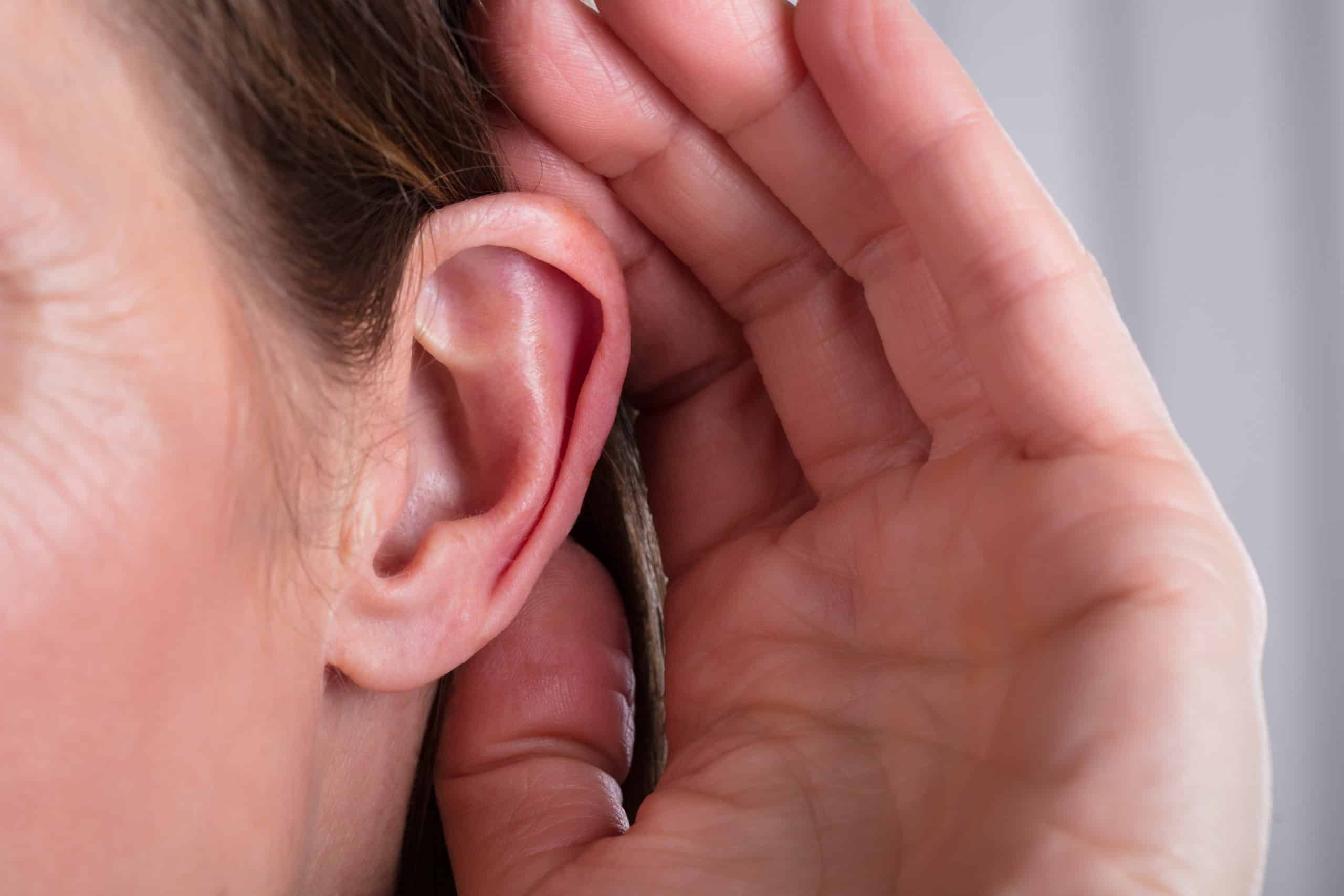Risk-free 30 Day Trial: Limited availability every month!

When you’re looking for a hearing solution due to an ear condition or hearing loss, the best hearing aid for you will likely depend on what condition you’re experiencing, as different types of hearing loss are caused by different things. To understand ear conditions and hearing loss, it helps to know how we hear – how sound waves get translated into electrical impulses our brain can understand.
Types of Sound
All sound is made of waves or vibrations. The characteristics of these vibrations change the experience of that sound. For instance, a sound with a lower frequency sounds lower, and pitches of high frequencies sound, well, high. Sound loudness is determined by how tall the soundwave is, a property known as amplitude. The higher the amplitude, the louder the noise, measured in decibels (db).
Normal hearing can understand frequencies from about 20-20,000 Hertz, or vibrations per second. Most people can hear sounds as quiet as 1 db, and hearing can become damaged with prolonged exposure to sounds louder than 85 db, and the loudest noises can reach 150 db.
Anatomy of the Ear
Your ear has three parts: the inner, middle, and outer ear. These work together to convert soundwaves into electricity that is sent to a specific part of your brain. A condition or malfunction in any part of the ear can lead to hearing loss, as they are all integral to the process of hearing.
How Hearing Works
In general, we can say that sound follows a three-step process to be perceived by a person.
Step One: Capture Sound
The simple first step is funneling sound from your environment into the ear canal so it can be picked up by the middle ear. This is the function of your outer ear, which consists of the visible part of the ear and ear canal. At the end of the ear canal is the eardrum, which vibrates to transfer the sound signal to the middle ear.
Step Two: Amplify Signal
Within the middle ear are three tiny bones that vibrate against one another in a specific way to amplify the strength of the signal coming from the eardrum to ensure the highest quality signal to be processed by the inner ear. The vibrations are carried to the oval window, which is the beginning of the inner ear.
Step Three: Convert to Electric Impulses
The inner ear contains the cochlea, which is a spiral-shaped organ filled with fluid and tiny hairs connected to a layer of sensitive cells. As the vibrations from the middle ear reach the cochlea, it vibrates, shifting the fluid around, causing the hairs to flex back and forth. This motion creates tiny pulses of electric current that are carried to the brain’s hearing center through an auditory nerve. The brain then interprets the signal as perceived sound.
Hearing Solutions in Georgia
The hearing process is a complex and delicate process, and anything that disrupts any part of it can lead to various forms of hearing loss. Fortunately, in many cases, this can be offset by amplifying sounds that are hard to hear with an external device to help the ear organs deliver the needed auditory information to the brain. To find out what hearing aid or other hearing loss solution may be right for you after a comprehensive hearing test, call or contact Georgia Hearing Aid Factory Outlet online today. Our three locations are a convenient distance from many communities in Georgia, including Clarksboro, Noonday, Dahlonega, and more.


 (706) 525-5463
(706) 525-5463